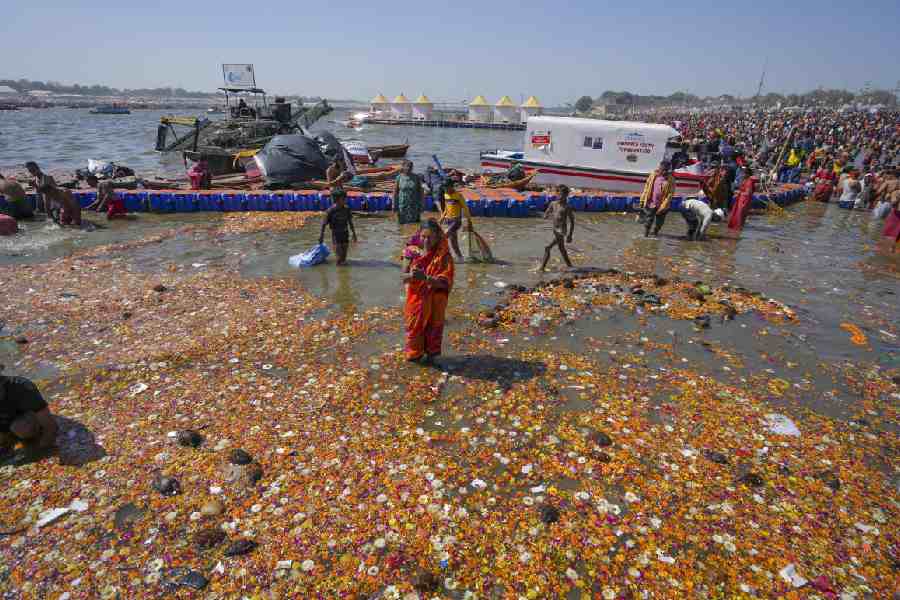India’s apex pollution control authority has told an environmental tribunal that the river water at the Mahakumbh contains high levels of bacteria that indicate contamination with human or animal faecal waste, making it unsuitable for bathing.
A report submitted by the Central Pollution Control Board (CPCB) to the National Green Tribunal (NGT) shows that the abundance of bacteria indicating faecal contamination of water was at some sites last month three times to over 19 times the permissible level for bathing.
"River water quality was not conforming with the primary water quality for bathing w.r.t. faecal coliform at all the monitored locations on various occasions,” the CPCB had told the NGT. "(The) huge number of people taking bath at Prayagraj during Maha Kumbh Mela in (the) river including auspicious bathing days… eventually leads to increase in faecal concentration,” according to the CPCB report, cited by the NGT during its observations on Monday.
The NGT, in its order on Monday, directed the Uttar Pradesh Pollution Control Board and state authorities responsible for maintaining the water quality in the Ganga at Allahabad to appear virtually on the next hearing date set on Wednesday.
The NGT had in an order dated December 23, 2024, noted that the Magh Mela would continue for about 45 days from January 12 to February 26 with six important bathing days. Millions of people from across India have visited Allahabad for the Kumbh Mela over the past four weeks.
The NGT order had directed regulatory agencies to strengthen the management system and be prompt in ensuring compliance, especially during days of increased footfall.
“The authorities will ensure that no untreated sewage and solid waste from any of the drains in Prayagraj is discharged in (the) river(s) Ganga and Yamuna,” the NGT had noted.
The CPCB and the Uttar Pradesh PCB “shall ensure that the river water quality at all times is drinking water/bathing water quality”, the NGT had said.
Faecal coliform, a marker for sewage contamination, has a permissible threshold of 2,500 units per 100ml, according to the CPCB. The report submitted by the CPCB to the NGT on February 3 lists the results of water sampling tests conducted on several days during January.
The report shows that on January 14, faecal coliform levels were 11,000 at the Sangam, 17,000 at Deeha Ghat, and 33,000 at Old Naini Bridge, each site along the Ganga. On January 15, faecal coliform levels were 6,800 at the Sangam, 4,500 at Deeha Ghat, and 7,800 at the Lord Curzon Bridge.
On January 20, faecal coliform levels rose to 49,000 at the Sangam, dropped to 7,800 at Deeha Ghat and were 23,000 at the Old Naini Bridge, according to the report.
The CPCB report also said Allahabad had 10 installed sewage treatment plants (STPs) with a treatment capacity of 340 million litres per day. Seven STPs discharge their treated wastewater into the Ganga while the other three discharge their treated wastewater into the Yamuna.
All STPs were operational with disinfection facilities and sample analysis from the STP outlets shows that all but one STPs are complying with stimulated norms, the CPCB said.

